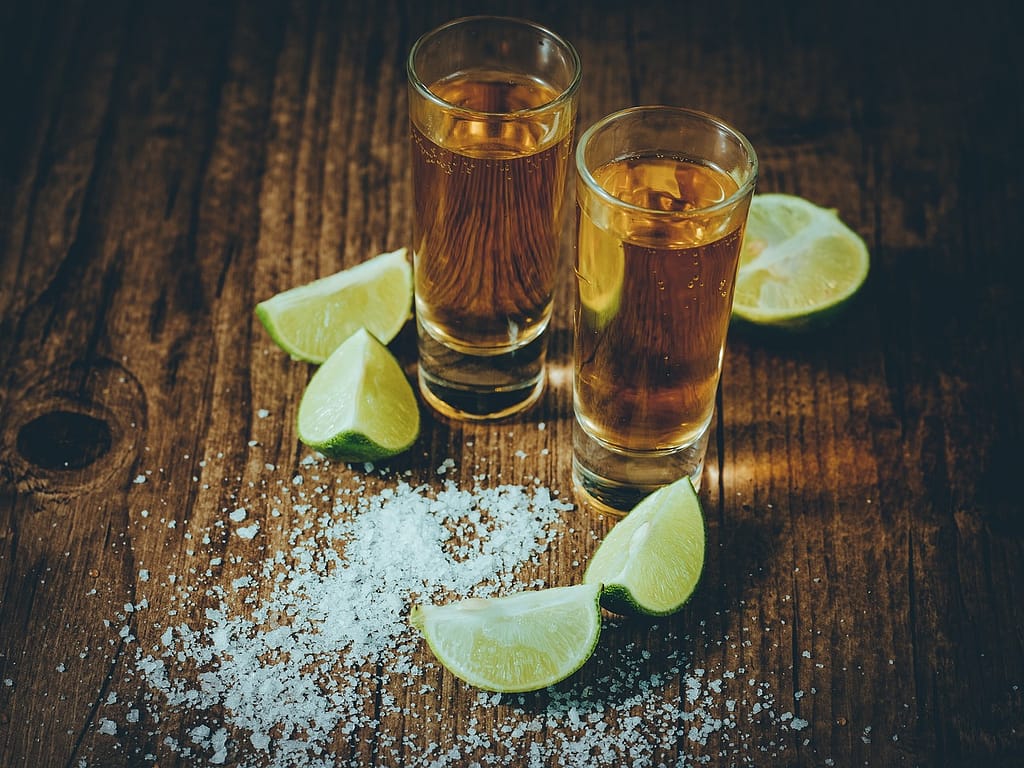Are you curious about the intriguing world of tequila? Have you ever wondered what this beloved Mexican spirit is made from and how it is produced? Look no further, as we are here to provide you with all the essential details. In this article, we will delve into the fascinating process of tequila production and explore the ingredients that go into making this spirited beverage.
With a touch of history and a dash of insight, we aim to quench your thirst for knowledge and leave you with a newfound appreciation for the craftsmanship behind tequila. So, sit back, relax, and let us whet your appetite for the world of tequila.
Tequila Production Process
Tequila, the iconic Mexican spirit, has a rich and fascinating production process. From the harvesting of agave plants to the aging and bottling of the final product, every step plays a crucial role in creating the unique flavors and characteristics of tequila. In this article, we will take a detailed look at each stage of the tequila production process, giving you a comprehensive understanding of how this beloved spirit is made.
Harvesting Agave Plants
The first stage in the tequila production process is the harvesting of agave plants. Agave, a succulent plant native to Mexico, is the primary ingredient use to make tequila. The selection of agave plants is a crucial step as it directly impacts the quality and flavor of the final product.
Agave plant selection involves choosing mature plants that have reached their peak in terms of sugar content. This is important because the sugar content of the agave plant is what ultimately gets convert into alcohol during the fermentation and distillation processes.
The maturation process of agave plants typically takes several years. During this time, the plants are nurtural and allowed to fully develop their sugar stores, ensuring a rich and flavorful drink.
Harvesting techniques vary, but the most common method involves using a sharp tool, such as a machete, to remove the leaves and expose the “piña” or the heart of the agave plant. The piña is what is used to make drink.
Cooking the Agave Hearts
Once the agave plants have been harvested, the next step is cooking the agave hearts, or piñas. Cooking the piñas is a crucial process as it softens the plant fibers and converts the complex carbohydrates into fermentable sugars.
Traditional oven cooking is one method used to cook agave hearts. This involves placing the piñas in large stone or brick ovens and slow-roasting them over an extended period of time. The slow cooking process imparts unique flavors and caramelization to the agave, adding depth to the final drink.
Modern autoclave cooking is another method that has gained popularity in recent years. This process involves using pressurized steam to cook the piñas quickly and efficiently. Autoclave cooking is known for producing tequilas with a more consistent flavor profile.
The cooking duration and temperature vary depending on the desire flavors and characteristics of the drink being produce. This step is crucial in developing the distinct flavors that tequila enthusiasts crave.
Milling the Agave Hearts
After the agave hearts have been cooked, they need to be crushed to extract the juices that will be fermented and distilled to make tequila. There are different milling techniques used in the industry, each contributing unique qualities to the final product.
Tahona wheel milling is a traditional method that involves using a large stone wheel to crush the cooked agave hearts. The crushed pulp is then mixed with the extracted juices before fermentation. This method is known for adding earthy and rustic flavors to the drink.
Roller milling is a more modern technique that uses mechanical rollers to crush the agave hearts. This method is quicker and more efficient than tahona wheel milling and produces a different flavor profile.
Combination milling involves using both the tahona wheel and roller milling methods to crush the agave hearts. This approach allows for greater control over the flavor profile, as it combines the earthy notes of tahona wheel milling with the efficiency of roller milling.

This image is property of pixabay.com.
Fermentation
The fermentation stage is where the magic of tequila truly begins. During fermentation, the sugars extracted from the agave hearts are convert into alcohol by the action of yeast. This process can take anywhere from a few days to several weeks, depending on various factors.
The addition of yeast is a crucial step in fermentation, as it determines the flavors and aromas that will be present in the final tequila. Different strains of yeast can used to produce different flavor profiles, ranging from fruity and floral to spicy and earthy.
The duration of fermentation also plays a significant role in the final product. Longer fermentation periods often result in more complex flavors and a smoother tequila.
Temperature control is essential during fermentation to ensure the yeast is working optimally. Depending on the desired outcome, fermentation can take place at different temperature ranges, with lower temperatures often resulting in a slower and more flavorful fermentation process.
Different fermentation techniques can also be employ, such as open-air fermentation or close tank fermentation. Each technique brings its own unique characteristics to the tequila, allowing for a wide variety of flavor profiles to be achieve.
Also Check: What Does Tequila Taste Like? A Guide To Its Flavor Profile.
Distillation
Distillation is the process by which the fermented liquid is transformed into tequila. The goal of distillation is to separate the alcohol from the impurities, resulting in a clear, pure spirit. There are several methods of distillation used in the production of tequila.
Pot still distillation is a traditional method that involves heating the fermented liquid in a large pot or alembic still. As the liquid evaporates, it passes through a condenser, where it is cooled and converted back into a liquid form. Pot still distillation is known for producing tequilas with robust flavors and rich aromas.
Column still distillation, also known as continuous distillation, is a more modern method that involves passing the fermented liquid through a series of columns. Each column separates different compounds, resulting in a highly purified spirit. Column still distillation is favored for its efficiency and ability to produce large quantities of tequila.
Double or triple distillation is a technique used to refine the tequila further. By subjecting the spirit to multiple rounds of distillation, impurities are further remove, resulting in a smoother and more refined flavor profile.
Distillation process variations, such as the use of copper stills or the addition of flavoring agents during distillation, can also be employ to create unique tequilas with distinct characteristics.

This image is property of pixabay.com.
Aging and Bottling
The final stages of the tequila production process involve aging and bottling the spirit. Aging tequila in oak barrels is a common practice that imparts additional flavors and complexity to the spirit. The type of oak used for aging, as well as the length of time spent in the barrel, greatly influences the final product.
Moreover, Blanco or Silver tequila is unaging and typically bottle shortly after distillation. It is know for its fresh and vibrant flavors, making it a popular choice for cocktails.
Reposado tequila is age for a minimum of two months but less than a year in oak barrels. This aging process adds depth and complexity, resulting in a smoother and more nuanced tequila.
Additionally, Añejo tequila is aging for a minimum of one year but less than three years in oak barrels. The longer aging period allows the tequila to develop rich flavors and aromas, making it a sipping tequila appreciated by connoisseurs.
Additional filtering and processing steps, such as charcoal filtering or chill filtration, can also be employ to refine the tequila and achieve a desire clarity or texture.
Types of Tequila
Tequila comes in a variety of styles, each with its own unique characteristics. Understanding the different types will help you choose the tequila that suits your taste preferences.
Blanco or Silver tequila, as mentioned earlier, is unaged and bottled shortly after distillation. It is know for its pure agave flavors, with notes of citrus and pepper.
Reposado tequila, aged for a minimum of two months but less than a year, offers a balance between the vibrant agave flavors of blanco tequila and the complexity imparted by oak aging. Moreover, It has a smooth and slightly woody character.
Añejo tequila, aged for a minimum of one year but less than three years, showcases the rich and nuanced flavors that come with aging in oak barrels. It often has notes of caramel, vanilla, and spice.
Extra Añejo tequila, aged for a minimum of three years, is the pinnacle of tequila aging. It is characterize by its deep amber color, velvety texture, and complex flavors reminiscent of dark chocolate, dried fruit, and oak.

Source: TheTechBrain AI
Quality and Regulations in Tequila Production
To ensure the quality and authenticity of tequila, there are specific regulations and certifications in place.
Tequila regions, primarily locates in the Mexican states of Jalisco, Guanajuato, Michoacán, Nayarit, and Tamaulipas, are designate areas where agave can be grow and it can be produce. Each region imparts unique characteristics to the tequila produced there, influenced by the soil, climate, and agave varieties.
Conclusion
The process of producing tequila is a labor of love. From carefully selecting and harvesting agave plants to the meticulous cooking, milling, fermentation, distillation, and aging processes, each step is vital in creating the unique flavors and characteristics of tequila. Tequilas come in a diverse range, offering something for every palate with varied techniques and attention to detail. So, the next time you sip on a glass of tequila, take a moment to appreciate the craftsmanship and expertise that goes into every bottle. Salud!


